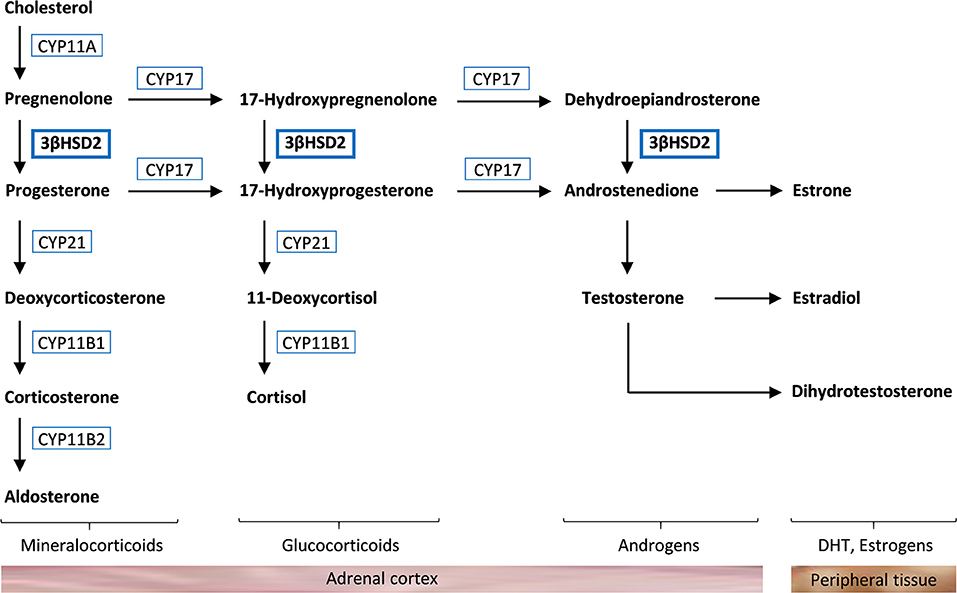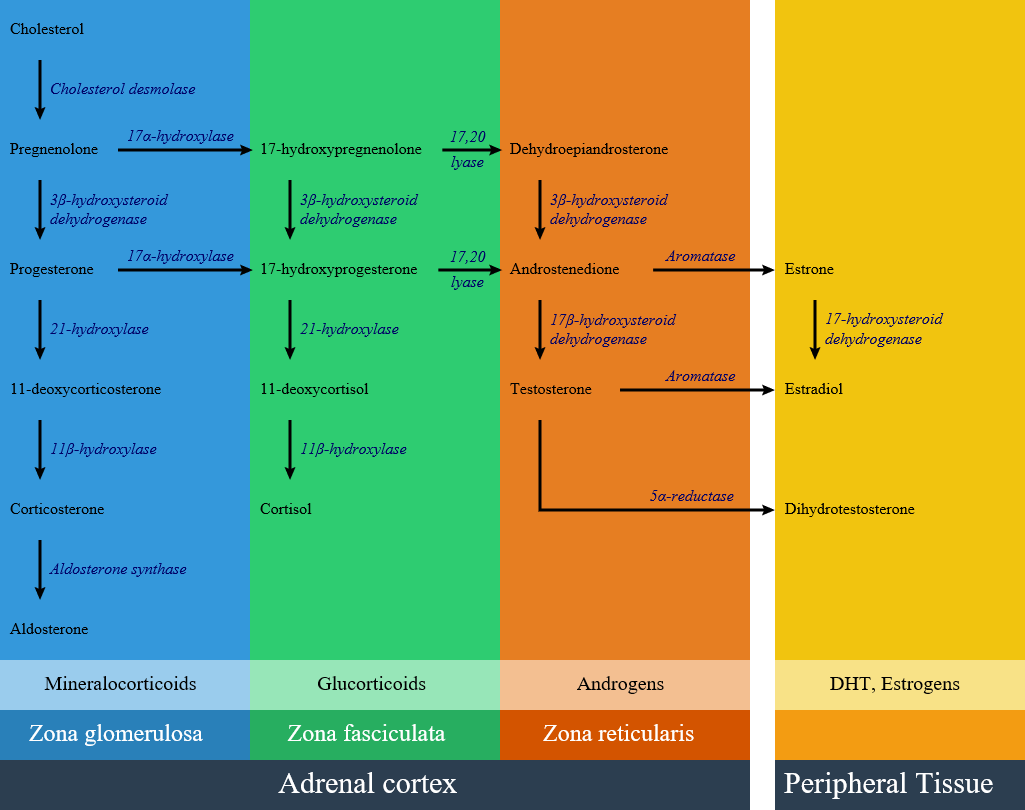Congenital Adrenal Hyperplasia, commonly abbreviated as CAH, is a group of inherited genetic disorders that affect the adrenal glands. These small but vital organs sit atop the kidneys and are responsible for producing hormones essential for life, including cortisol, aldosterone, and androgens. In individuals with this condition, the adrenal glands do not function properly due to enzyme deficiencies, leading to an imbalance in hormone production. This article provides a comprehensive overview of Congenital Adrenal Hyperplasia, exploring its causes, symptoms, and available treatments.

Understanding Congenital Adrenal Hyperplasia
Congenital Adrenal Hyperplasia refers to a collection of disorders caused by mutations in genes that regulate the production of enzymes involved in hormone synthesis. The most common form of this condition results from a deficiency in the enzyme 21-hydroxylase, which plays a critical role in the production of cortisol and aldosterone. Without sufficient levels of these hormones, the body compensates by overproducing other hormones, such as androgens, which can lead to a range of physical and developmental issues.
This condition is present at birth, although symptoms may vary depending on the severity of the enzyme deficiency. Some forms of this condition are life-threatening, while others may cause milder symptoms that become apparent later in life. Understanding the underlying mechanisms of this disorder is crucial for early diagnosis and effective management.
How the Adrenal Glands Function
- Cortisol: Often referred to as the “stress hormone,” cortisol helps regulate metabolism, immune response, and blood pressure.
- Aldosterone: This hormone maintains the balance of salt and water in the body, which is essential for controlling blood pressure.
- Androgens: These are male sex hormones, such as testosterone, which are also present in females in smaller amounts.
In individuals with Congenital Adrenal Hyperplasia, the lack of specific enzymes disrupts the normal production of cortisol and aldosterone, causing the adrenal glands to produce excessive amounts of androgens. This hormonal imbalance is responsible for many of the symptoms associated with the condition.
Causes of Congenital Adrenal Hyperplasia
Congenital Adrenal Hyperplasia is primarily caused by genetic mutations that are passed down from parents to their children. It follows an autosomal recessive inheritance pattern, meaning that a child must inherit two copies of the defective gene—one from each parent—to develop the condition. If both parents are carriers of the mutated gene, there is a 25 percent chance with each pregnancy that their child will have the disorder.
Role of Enzyme Deficiencies
The most common enzyme deficiency associated with this condition involves 21-hydroxylase, which accounts for approximately 95 percent of cases. Other less common enzyme deficiencies include 11-beta-hydroxylase and 3-beta-hydroxysteroid dehydrogenase. Each enzyme deficiency affects hormone production differently, leading to variations in symptoms and severity.
- 21-Hydroxylase Deficiency: This is the most severe and common form, often resulting in insufficient cortisol and aldosterone production.
- 11-Beta-Hydroxylase Deficiency: This form leads to high blood pressure and excess androgen production.
- 3-Beta-Hydroxysteroid Dehydrogenase Deficiency: This rare form affects both adrenal and gonadal hormone production.
Symptoms of Congenital Adrenal Hyperplasia
The symptoms of Congenital Adrenal Hyperplasia vary widely depending on the type and severity of the enzyme deficiency. In some cases, symptoms are evident at birth, while in others, they may not appear until later in childhood or adolescence. Below are the most common symptoms associated with this condition.
Salt-Wasting Form
The salt-wasting form is the most severe type of this condition and is often diagnosed shortly after birth. Infants with this form have dangerously low levels of aldosterone, which impairs their ability to retain salt and maintain proper blood pressure. Symptoms include:
- Vomiting
- Dehydration
- Low blood sugar levels
- Weight loss
- Lethargy or extreme tiredness
If left untreated, the salt-wasting form can lead to a life-threatening condition known as an adrenal crisis, which requires immediate medical attention.
Simple Virilizing Form
The simple virilizing form is less severe than the salt-wasting form but still results in significant symptoms due to excess androgen production. In female infants, this can cause ambiguous genitalia, where the external reproductive organs appear more masculine than feminine. Male infants may not show visible signs at birth but may experience early puberty, including rapid growth and the development of pubic hair at an unusually young age.
Non-Classical Form
The non-classical form is the mildest type of this condition and may not be diagnosed until later in childhood or adulthood. Symptoms are often subtle and can include:
- Precocious puberty
- Irregular menstrual cycles in females
- Excessive body hair or acne
- Infertility
While the non-classical form is less severe, it can still impact quality of life and may require treatment to manage symptoms effectively.
Treatments for Congenital Adrenal Hyperplasia
While there is no cure for Congenital Adrenal Hyperplasia, various treatments are available to manage symptoms and prevent complications. The primary goal of treatment is to restore hormone balance and address specific symptoms associated with the condition.
Hormone Replacement Therapy
Hormone replacement therapy is the cornerstone of treatment for this condition. Individuals with the salt-wasting form require lifelong supplementation with glucocorticoids, such as hydrocortisone, to replace deficient cortisol. Mineralocorticoids, such as fludrocortisone, may also be prescribed to address low aldosterone levels and help regulate salt and water balance.
Dosages of these medications are carefully adjusted based on age, weight, and individual needs. Regular monitoring through blood tests is essential to ensure that hormone levels remain within a healthy range.
Treatment for Salt Imbalance
In addition to medication, individuals with the salt-wasting form may need to increase their intake of salt, especially during infancy and periods of illness. Parents are often advised to add extra salt to their baby’s formula or food to prevent dehydration and maintain electrolyte balance.
Managing Excess Androgens
For individuals with excess androgen production, additional treatments may be necessary to address specific symptoms. For example:
- Females with ambiguous genitalia: Surgical intervention may be considered to reconstruct external genitalia, although this is a highly individualized decision that requires careful consultation with healthcare providers.
- Early puberty: Medications may be prescribed to delay puberty and allow for normal growth and development.
- Acne and excessive body hair: Topical treatments or oral medications may be used to manage these symptoms.
Psychological Support
Living with Congenital Adrenal Hyperplasia can be challenging, particularly for individuals who experience physical differences or fertility issues. Psychological support and counseling can play a vital role in helping patients and their families cope with the emotional and social aspects of the condition.
Regular Monitoring and Follow-Up
Ongoing medical care is essential for individuals with this condition. Regular check-ups with an endocrinologist are necessary to monitor hormone levels, adjust medications, and address any emerging symptoms. Early detection and treatment of complications, such as adrenal crises or infertility, can significantly improve outcomes.
Conclusion
Congenital Adrenal Hyperplasia is a complex and multifaceted condition that requires a comprehensive approach to diagnosis and treatment. By understanding its causes, recognizing its symptoms, and implementing appropriate therapies, individuals with this condition can lead healthy and fulfilling lives. Ongoing research continues to advance our knowledge of this disorder, offering hope for improved treatments and outcomes in the future.





